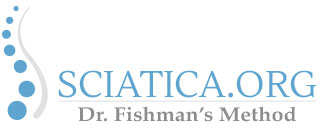Loren Fishman, MD and Carol Ardman:
Yoga for Osteoporosis: the Complete Guide. Completely Revised and Updated. W.W. Norton (2025). To purchase Yoga for Osteoporosis: the Complete Guide (2025) click HERE.
“Yoga for Weight Loss” has been published by W.W. Norton and tackles the controversial topic: “Does yoga help you lose weight?”
Citing a number of examples, I argue that yoga can result in weight loss in three ways, by:
1. Activating reflexes that reduce appetite.
2. Increasing the number and the activity of the mitochondria, the calorie-burning, energy-giving organelles in every cell.
3. Revealing the sanctity of your own body, and the universe of which you are a part.
To purchase Yoga for Weight Loss click HERE
Recent Books:
Yoga for Osteoporosis: the Complete Guide. New York: NY.: W.W. Norton, 2025.
Yoga for Weight Loss. New York, NY: W.W. Norton, 2020.
Healing Yoga. New York, NY: W.W. Norton, 2014.
Yoga for Back Pain. New York, NY: W.W. Norton, 2012.
Functional Electromyography: Provocative Maneuvers in Electrodiagnosis. New York, NY: Springer, 2010.
Yoga for Osteoporosis. New York, NY: W.W. Norton, 2010. New Edition (2025) NOW AVAILABLE!
Yoga for Arthritis: the Complete Guide. New York, NY: W.W. Norton, 2008.
Yoga and Multiple Sclerosis: a Journey to Health and Healing. Demos Health. 2007.
Sciatica Solutions: Diagnosis, Treatment and Cure of Spinal and Piriformis Problems. New York, NY: W.W. Norton, 2006.
Recent Articles
Fishman, Loren M Yoga and Bone Health. Orthopaedic Nursing. May/June 2021; 40(3): 169-179.
Loren Fishman, MD, Erik Groessl, PhD and Paul Bernstein, OMS III. Two Isometric Yoga Poses Reduce the Curves in Degenerative and Adolescent Idiopathic Scoliosis. Topics in Geriatric Rehabilitation: October/December 2017: 33(4): 231–23.
Subjects and Methods: Retrospective study of 49 DS and 25 AIS patients with initial Cobb angles less than 120° (DS) and less than 75° (AIS) performing side plank daily, with lumbar and thoracolumbar curves’ convex side inferior. In complex curves, the half-moon pose was added. Outcome measure included Cobb angles after mean 5.8 and 9.4 months, respectively.
Results: Mean lumbar/thoracolumbar improvement: 23.7% (P < .00) in DS, 34.2% (P = .001) in AIS. Thoracic curves improved 27.6% (P = .001) and 20.3% (P = .004): 2.5% per month and 3.5% per month, respectively.
Conclusions: These yoga poses may reduce scoliosis in DS and AIS.
Recent Posts:
PROBLEMS
WITH
THE MAYO CLINIC’S YOGA FOR OSTEOPOROSIS STUDY
by Loren Fishman, M.D. B.Phil.,(oxon.)
February 22, 2019

Dueling Osteoporosis Research
Wonderful news – the Mayo Clinic has begun studying yoga for osteoporosis, another indication that mainstream medicine is recognizing the importance of yoga in medicine.
“Tissue and Bony Injuries Attributed to the Practice of Yoga: A Biomechanical Analysis and Implications for Management,”* published in the Mayo Clinic Proceedings on February 20, 2019, cites twelve yoga poses it finds dangerous for those who have osteoporosis. I’m writing to assure you that what they’ve found is not dangerous for people doing the yoga in the DVDs I’ve created — “12 Poses vs. Osteoporosis,” Series I and Series II.
The paper gets some things right
The 12 poses I have chosen for you have been shown to arrest and reverse osteopenia and osteoporosis All of the poses that the Mayo authors found cause bony injury involve flexion – bending forward or forward folding. I believe this contraindication is correct. The Fishman Method DVDs “Twelve Poses vs. Osteoporosis, Series I and Series II” uses yoga to arrest bone loss and increase bone mass. The DVDs contain no forward flexion poses. My peer- reviewed and published yoga program** has been shown to have beneficial results, and has produced no fractures — none.
The paper gets some things wrong
1. The Mayo authors advise patients who have arthritis as well as osteoporosis not to do the Bridge pose (Setubandhasana) or the seated twist (Marichyasana) because they may cause injury. The original Fishman Method DVD*, “Twelve Poses vs Osteoporosis, Series I” contains these very two poses. In over 100,000 hours of practice by more than 1000 practitioners there have been no reports of fracture or serious injury of any kind. Not one. I believe twists are actually a n excellent and safe way to strengthen vertebral bodies – the most frequently fractured of all bones.
That is because forward bending can produce the very fractures we’re trying to prevent! In our 741 patient-study,** the circular movements of twists appear to significantly improve vertebral bone mineral density. The Mayo Clinic study includes patients who also have arthritis. Facet arthritis can indeed cause pain with backbends. But conflating arthritis with osteoporosis is confusing: the pain does not come from the osteoporosis.
2. Unfortunately, both the Mayo Clinic and I coincidentally chose 12 poses, which is confusing. But the similarity ends there. The Mayo Clinic article does not distinguish between different styles of yoga or even name the styles in the study. My Twelve Poses DVDs are based on Iyengar yoga, in which past medical history and alignment are paramount.
3. Sometimes people have long-standing conditions they’re unaware of until they do yoga. These injuries are not caused by yoga, but they are recognized while doing yoga. Fifteen of the ‘injuries’ the Mayo Clinic’s researchers identify are kyphoscoliosis. This is a chronically developing condition, and cannot realistically be believed to occur while doing yoga, as any doctor knows.
Along with the Mayo Clinic authors, I lament that yoga is often done without training or education about which poses might be dangerous. That is one of the reasons I created YIP.guru, (Yoga Injury Prevention.) This searchable compendium lists contraindications for osteoporosis (including flexion).
In general, it is true that yoga can cause injuries, and one must be knowledgeable and careful. It may be said that medications and surgery may have even worse side-effects. I think the yoga therapy community would appreciate medical studies that test to substantiate the positive effects of yoga
References
* Soft Tissue and Bony Injuries Attributed to the Practice of Yoga: A Biomechanical Analysis and Implications for Management Melody Lee, MD; Elizabeth A. Huntoon, MD, MS; and Mehrsheed Sinaki, MD, MS Journal of the Mayo Clinic.
* Lu YH, Rosner B, Chang G, Fishman LM. Twelve-minute daily yoga regimen reverses osteoporotic bone loss. Top Geriatr Rehabil. 2016;32(2):81-87.
